
We kindly inform you that, as long as the subject affiliation of our 300.000+ articles is in progress, you might get unsufficient or no results on your third level or second level search. In this case, please broaden your search criteria.

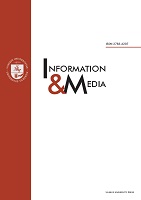
This research mainly explores the connection between Dan Brown’s The Da Vinci Code, with the filmmaker’s cinematic depiction of literature. Ron Howard as an adaptation director in the Hollywood industry is evaluated in the context of his auteurism and examined his approach of repudiating a substantial portion of the Catholic secrets which dodged the predicament of fidelity, a core of conventional Film Adaptation. Disregarding the controversy, fidelity is indeed a deliberate action overtly brought by the auteurist vision resulting from screenwriting. This article explores the modern implications of screenwriting on auteurist function, aiming at how Hollywood’s conception of the director’s auteurism in cinema works and the film’s artistic approaches from the novel to the screenplay. This study illustrates that the adaptation highlights the author’s and his work’s superiority yet emphasises the director’s technique as inevitable during the transposition.
More...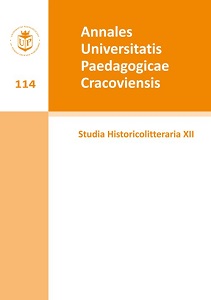
The author traces the influences of the Battle of Grunwald, 1410 (understood as a cultural artifact) in various works of art. The religious hymn Bogurodzica (Mother of God), known already before the Battle, after 1410 gained the status of national anthem, promoted by the chronicler’s account of the event. The Battle of Grunwald features in Polish literature, painting, music, film and even in the latest tools for communication and education (board games, the Internet). The article serves as an introductory sketch to the complex issue of the significance of the mythologised Polish victory in the development of Polish artistic culture.
More...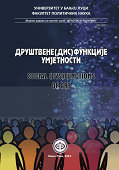
This paper deals with the analysis of aesthetic and social factors that were crucial in the communication process between the Classical Hollywood Western and the audience. The focus of the paper is on the Western films made between 1940 and 1970, when the genre of Classical Western was extremely popular worldwide. The reasons for this are manifold, since they encompass the aesthetic, sociological and psychological sphere. Firstly, as a relatively new art, film was beloved by spectators, and the aesthetic structure of the Western (themes, manners of interpretation, directing, acting and other) suggestively attracted the attention of millions. The paper also identifies ideological (sociological) components of communication. Particular emphasis is placed on the change in the relationship of film auteurs towards Indians, who were at first represented as savages only for that image to become much more objective and closer to the truth. Explication and exemplification of the hypotheses are conducted using the examples of typical and characteristic films that belong to the category of Classical Westerns. Furthermore, the paper contains a comparative analysis of the most prominent authors of this popular genre, including John Ford, Howard Hawks and Budd Boetticher
More...
After the Greek civil war between the forces of the Communist Party and those of the right-wing civil political system (1946-1949), commercial cinema met an explosive development. The paper connects its growth with the attempt on behalf of the post-civil war right-wing Greek state to establish its cultural hegemony through popular movies, which promoted ideas such as hard work, family values, an individualistic perspective on prosperity (as opposed to the social struggles of the left), and, above all, obedience to the legal order (since, after its defeat, Communist Party was literally illegal). All these ideas were expressed through the emergence of the model-character of a poor but honest citizen: usually coming from the working class, his main features were his political indifference and his desire for undisturbed social peace, while the plot was built around his pursuit of personal happiness, achieved through hard work or, in the case of women, through a successful marriage. During the post-civil war era, all the way through the 1967 dictatorship, cinemas (especially in working-class neighborhoods) will function not only as meeting points for entertainment, but also as cultural melting-pots, where the political passions of the past would be left in oblivion, where the controversies of the present would be blunted, and where a very cheap ticket could create a convincing promise of a prosperous future.
More...![Passe douloureux et présent apaisé ? Des récits de vie de femmes allemandes et polonaises en Silésie dans le documentaire Aber das Leben geht weiter [Mais la vie continue]](/api/image/getissuecoverimage?id=picture_2023_82626.png)
Two elderly German women return with their daughter and niece to their former family home in Silesia (Poland), only to find the current Polish home owner along with her descendants. This is how the German film director Karin Kasper documents her own family history together with that of the Polish family installed in their farmhouse after the Second World War, in her movie Aber das Leben geht weiter [But Life Goes On], produced in 2010. I aim to analyze the representation of this exclusively feminine intergenerational and international encounter. Fueled mainly by the narratives of elderly people, but also by photographs and videos taken from the respective family archives, and, of course, by several recordings of the participants themselves as well as the house and the village where these reunions take place, this documentary’s objective is to preserve and share the memories of the older generation. Such memories stir up very painful facets of the history of the 20th century in Eastern Europe: Second World War, persecutions and forced displacements of Polish ethnics by Germans and Soviets, flight and expulsion of the Germans, etc. Which light do these exclusively feminine micro-histories shed on the historical facts? How are the traumatic experiences expressed even decades afterwards? Could it really be a question of resilience? What emotions arise from what is said, but also from silences and postures? What heritage of memory and post-memory has been transmitted to the next generations? More broadly, can this “film testimony” contribute to the German-Polish reconciliation? Such are the main questions to which I wish to respond.
More...
This article analyses Alasdair Gray’s storyboard for a never made film adaptation of the novel Lanark: A Life in Four Books (1981) as a self-standing intermedial artwork. It presents an argument that the specificities of the nested graphic narrative medium, or “graphicality”, can be used not only for the reading of the storyboard’s text/image/space convergence, but for a better understanding of the textual and visual elements of the source novel as well. Gray’s autoreferential process, recognized in previous analyses of his literary work, is thus approached through the optics of his foregrounded media materiality. What takes centre position is the process of realising the story, and of the new artistic object made in the process. Such an object questions the reading and viewing regimes reproduced and displaced by every artwork. The analysis of the Lanark storyboard, which is an artwork “between” literature, graphic arts, and film, is a contribution to a rising body of scholarly work that uses a comprehensive theoretical approach to gain a better understanding of such syncretic artworks.
More...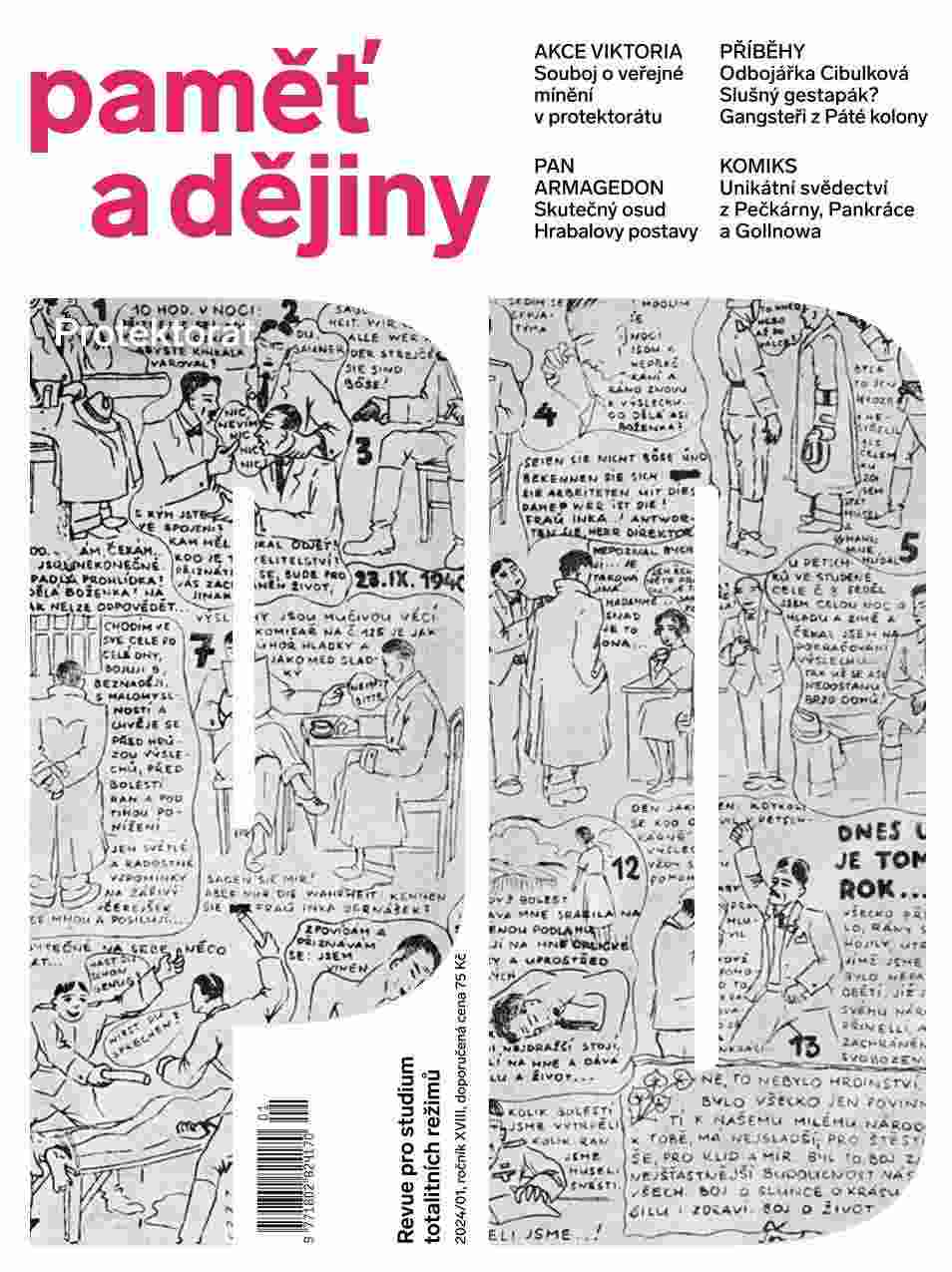
The article discusses the Film Harvest festivals held in Zlín during the Protectorate era in 1940 and 1941. These festivals, inspired by international film festivals like Venice, aimed to celebrate and promote Czech cinema. The first festival, organized by the Film Central Office for Bohemia and Moravia, featured a mix of feature and short films and included a rich accompanying program. The second festival saw increased German oversight and included prominent Nazi officials. Despite this, the festivals were significant cultural events, showcasing new Czech films and fostering a sense of national pride. The festivals also served as a platform for informal discussions about the future of Czech cinema post-war. The article highlights the festivals' dual role as both cultural celebrations and subtle acts of national resistance.
More...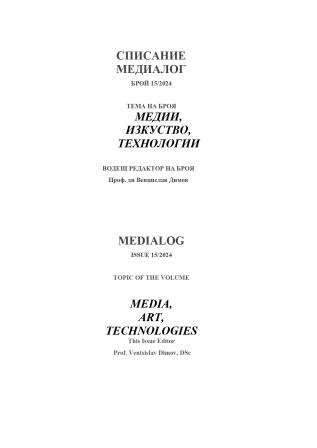
After observing the 20 photographs of the exhibition of Angel Kotzev the viewer is (I am) left with the feeling of unreality (the author presents this effect as aloofness): and no, this is not connected just with the abstract space, unusual tonality or the combination of objects. This is mainly because of the aesthetic taste – the aesthetics of ordinary objects, which are presented as a fantastic conventionality.
More...
The Constitution [Ustav Republike Hrvatske], a Croatian film written and directed by Rajko Grli? (2016), dramatizes how living together in a society challenged by interethnic hatred and homophobia requires interconnectedness and understanding. 1 Seemingly intractable differences are unexpectedly reconciled at the end of the film through the cultural custom of ritual kinship known as kum or godfatherhood. The film’s inspired but natural solution to interethnic conflict and intolerance introduces the subject of this short essay, namely, the unique role and unrecognized importance of interfaith ritual kinship for preserving solidarity and social order in a polyethnic society. Despite the deep wounding of this South Slav heritage, the cultural custom is faintly but tellingly sustained.
More...
Ustav Republike Hrvatske, hrvatski film koji je napisao i režirao Rajko Grlić (2016), prikazuje kako zajednički život u društvu koje se suočava sa međunacionalnom mržnjom i homofobijom zahtijeva međusobnu povezanost i razumijevanje. 1 Naizgled nepremostive razlike neočekivano se prevazilaze na kraju filma kroz kulturni običaj obrednog srodstva poznatijeg kao kumstvo. Filmom nadahnuto, ali prirodno rješenje međuetničkih sukoba i netolerancije daje uvod temi ovog kratkog eseja, odnosno jedinstvenoj ulozi i neprepoznatoj važnost međuvjerskog obrednog srodstva za očuvanje solidarnosti i društvenog poretka u polietničkom društvu. Uprkos narušavanju ovog južnoslavenskog naslija, kulturni običaji se rijetko, ali i dalje uspješno održavaju.
More...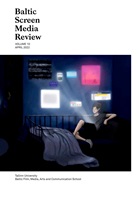
One key aspect of cinematographic lighting – and lighting in general – is its direction and how the lighting illuminates people and other objects of attention. In a natural setting, the light reaching the target usually has at least some level of directionality instead of being just ambient overall light. In cinematography directionality is used, among other things, to enhance the lit object’s three-dimensionality in an otherwise two-dimensional medium by bringing out its shape and texture and separating it from the background. While lighting has typically been studied based on its physical qualities that render for quantitative measures, such as intensity or color spectrum, less is known about how cinematographic lighting gives rise to the spectator’s emotive-cognitive experiences. Overall, film lighting has been studied surprisingly little, although both practical and academic literature emphasize its important role in cinematic expression. This paper presents a pilot study that examines viewers’ emotional reactions to photographs of an expressionless human face under lighting from different directions. The initial results indicate that lighting that obscures, hides, or distorts facial features creates stronger emotional reactions in the viewer than lighting that reveals them, contributing to the scientific understanding of the audience’s reactions and the filmmaker’s creative decisions.
More...
The following article comes as a result of a Spanish Ministry R&D funded project entitled “Virtual Worlds in Early Cinema: Devices, Aesthetics and Audiences”. Our starting hypothesis is that some of the central ideas that define the metaverse’s virtual imaginary can be found in some of the visual devices and apparatuses from the 17th to the early 20th centuries. The article contextualizes and details how the desire for immersion, three-dimensional images, observation of replicas of our worlds, and living a non-narrative experience are contained in early optical devices such as magic lanterns, stereoscopic photography, panoramas, maréoramas or phantom rides. The main purpose is to illustrate that, despite the technological transformation, we ultimately are part of a long history where equivalences, parallelisms and returns arise between past and present times. The metaverse’s visual culture is no exception, and it gathers the imaginary of virtual worlds figured in some of the optical devices and visual spectacles of the past.
More...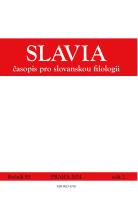
The article analyzes Russian etiquette expressions (greetings, invitations, consents, apologies, thanks, etc.) used in Russian television series of recent decades. For the first time the factual material of three films is considered in detail: “Liquidation” (2007), “Alexander Garden” (2005) and “Black Wolves” (2017). It is shown that screenwriters and directors allow the use of modern (latest) lexical units in films showing the history of the Soviet Union in the 1920s–1950s. These are expressions like Проехали! and idioms like Интересное кино! Such an anachronism is explained, in particular, by the genre properties of films: they combine the features of action films, detective stories and melodramas. Although these facts are a violation of historical reality, they can be justified by the desire to bring the situations of recent history closer to the modern viewer.
More...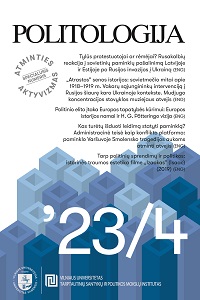
This article analyses the Lithuanian feature film Izaokas (Isaac, 2018) as an expression of memory activism. The film actualised heated debates on a national level over the role of ordinary Lithuanians in the Holocaust and collaboration with Nazi Germany, in spite of the fact that the filmmakers did not intend to engage in historical debates. Nonetheless, by generating an immersive experience and engaging viewers at the level of affect, the film effectively engages in polemics with public narratives of the Second World War.
More...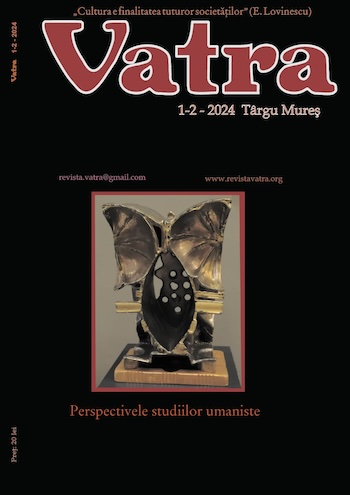
This article by Andrei-Călin Zamfirescu critically examines the controversial legacy of D. W. Griffith's 1915 film "The Birth of a Nation." The film, celebrated for its technical innovations but condemned for its racist portrayal of African Americans and glorification of the Ku Klux Klan, has sparked debates since its release. Zamfirescu explores the ideological underpinnings and historical distortions within the film, tracing its impact on American cultural and racial dynamics. He discusses the film's use of 19th-century nationalist myths, its role in the resurgence of the Ku Klux Klan, and its enduring influence on American cinema and societal attitudes towards race.
More...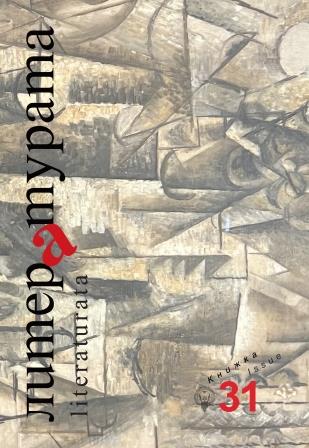
The article examines the adaptation of the novel “Under the Yoke” from 1952 as a paradigmatic example of the transformation of the literary source, subjected to the ideological dictates of the era of Bulgarian Stalinism. It traces the application of the Theses of the Screenplay Commission from 1949 by the creators of the film, paying attention to the main points where Vazov’s novel had to be “straightened,” i.e., altered at the level of the plot and dialogue: the class origin of the characters, the presentation of the revolutionary organization, and the attitude towards Russia. Special attention is given to the elimination of the comic-carnival layer in the novel and the foregrounding of the “rural” through the character of Borimechkata. The article also explores the analogies between the “straightening” of Vazov’s novel in the era of Stalinism and the criticisms of the novel by authors such as Vasil Baldzhiev and Iliya Milarov at the end of the 19th century.
More...
The article examines the South Slavic reception of two Bulgarian films made before and after the fall of the Berlin Wall, respectively. We are referring to the emblematic film for Bulgarian cinema “The Goat’s Horn” by the director Metodi Andonov (1972) and the quasi-documentary “Whose is this song?” by the director Adela Peeva (2003). Through a survey among Slovenian students, it is understood what the thinking is about the Bulgarian identity, stereotypes (negative and positive), the male-female worldview. Is the integration of the Balkan peoples possible, although not – what prevents us from getting to know each other better and more closely? What is causing the peninsula’s existential crises?
More...
The text examines the phenomenon of film adaptation of a literary text as a recontextualization and readaptation of idea concepts that transforms the original piece of work. The adaptation is analyzed by its property to change the existing dominant ideas, thus becoming a tool for reconceptualization and even ideological redaction. This property is depicted by examining adaptations of literary works that challenge the perceptions of women: “Eva on the third floor” (1982) by Darina Gerova and “Seven Angry Women” (1999) by Mariya Stankova. The analyses of the films demonstrates the changes that apply after the bending of a text in favor of some kind of concept or ideology is done.
More...
In recent years autofiction is a concept that has become increasingly popular in literary texts and documentaries. The article examines the interrelationships and interdependence between fact and fiction in the two arts through the desire to search and find the truth in Milena Makarius’ novel “Dossier: Janna” and the film “I See Red People” directed by Bozhina Panayotova, who is the writer’s daughter. Through personal discourse, personal, family and collective crises are revealed, but unconscious psychotraumas are also treated.
More...